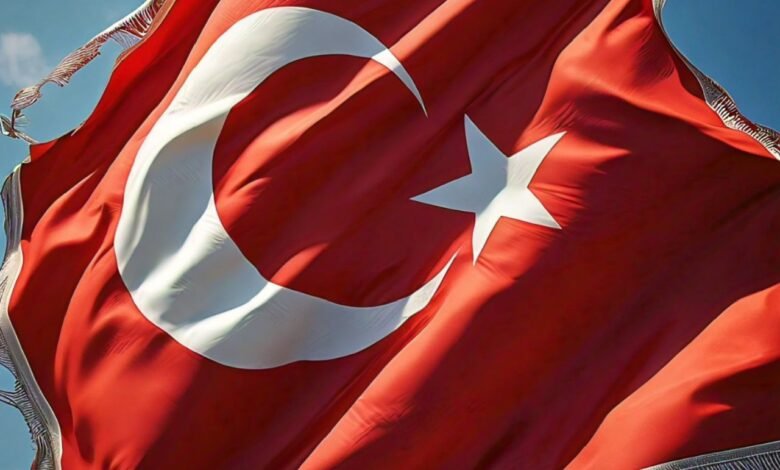“Utanmaz Türkler”: A Historical and Cultural Examination of a Controversial Term
“Utanmaz Türkler” could be used in a discourse regarding the Turkish foreign relations,

The term “Utanmaz Türkler,” which means ‘Shameless Turks’ in English, is a term that is rather ambiguous within the scope of the Turkish and the world politics at large. Though it is more or less a slanderous term, the phrase carries socio-culture and socio-historical connotations of various stereotype, bias and prejudice creating a socio-historical construction of Turkishness. This paper will thus focus on the meaning of this term and the fact that it has been employed in history as well as in the current society, together with other aspects that come with the concept of national prejudice.
Historical Background
In order to trace the beginnings of “Utanmaz Türkler”, it is necessary to discuss the belonging of Turkish identity in which the Ottoman Empire and the young Turkish Republic belonged. The Ottomans controlled large empire in the Middle East, Europe, and North Africa; for this reason European powers regarded them as potential threat. It was not only the military perception but also the cultural and religious one as the Ottomans were the leaders of the Islamic world during a big part of the empire existence.
It is probable that the term “Utanmaz,” or “shameless” has its genesis in this time of conflict between the Christian west and the Islamic east. The Ottomans and by extension the Turks were portrayed as ‘the other’ in European literature, arts, and political arena. For the indigenous people of Australia, this othering was a combination of the white settlers’ precursors’ fear, interest, and contempt. The viewers were shown that Ottomans were enemies who cannot be trusted, but at the same time, they are rich and luxurious people, barbarians but at the same time perverted people from the orient who is a complete opposite to the European civilization, that is why European’s writers and artists mostly portrayed Ottomans.
A famous portrayal of the Terrible Turk is presented in the French and Italian Renaissance art where “the Turk” is depicted as a warrior and a hedonist, a man with no moral values. This image remained for many centuries and was again reflected during such occurrences as the Siege of Vienna in 1683 where the Ottomans were depicted merely as the threat to the entire Christianity.
Modern-Day Usage
In the contemporary world, one can come across the use of the phrase within the title Utanmaz Türkler in different circumstances, more often than not as a form of slander or insult directed at Turkish people or the Turkish state. However, they are not restricted to critics or outsiders of Turkey only as shall be discussed below. Internally in Turkey however, the term has occasionally been used, or rather, misconstrued in political and/or cultural controversy mainly concerning issues of nationalism, patriotism, ethicality and or what some view as the degeneration of society.
For example, in the sphere of Turkish pop culture people might use the phrase ironically or sarcastically, pointing to some behaviors or attitudes that are regarded as shameful for the entire nation. For this reason, the term can also work as an auto-critique for the society of Turkey in question to assessing the degree of the internal conflicts on the question of modernization, westernization and the preservation of the ‘Islamic’ values.
Internationally, the phrase “Utanmaz Türkler” could be used in a discourse regarding the Turkish foreign relations, human rights abuse or any other contentious matter. Some external critics of Turkey especially from the countries with historical enmity or competition issues with Turks might use the term to feel superior morally, or to portray the Turkish state as inherently evil or untruthful. This usage can be seen to relate back to the stereotype that was set during the Ottomans in relation to shamelessness still continuing the same narrative in the modern era.
The Role of Stereotypes
The continued use of the term “Utanmaz Türkler” shows how long myths and prejudices govern the relations between people and their national and cultural images. Thus, irrespective of whether one is received positively or negatively, stereotype tends to have a long history and can remain Highly stable even with regard to the presence of new conditions. Singly, the male Turk is depicted as the shameless or immoral specimen in the portrayal of the Ottomans and the modern Turks by the Occident.
This stereotype has been further entrenched in the society through the aspects of literature, arts, journalism and political analysis and speeches. Thus, such representations have been instrumental in legitmizing or providing a rationale for political and/or military aggression against the Turks and attempting to represent them as the heathen ‘Other’ who needs to be subdued or domesticated.
But it is crucial to understand that stereotype is not the fixed concept as it can change as well as be discussed and analysed. Over the past few decades, prejudice has slowly been a thing of the past as more societies jettison foul stereotyping of the others and the introduction of multiculturalism. It is especially evident when scholars have attempted to bring about change to the conventional ways of viewing historical events and people who were once stereotyped or depicted in a negative light, the Turks included
National Identity and Internal Critique
In Turkey the term “utanmazlık” (shamelessness) has been a domestic concern for many regarding the formation of national character and cultural sensitivity. For a female character in a society that is honored, dignified, and has moral values and ethics, being referred to as shameless is very demeaning. Thus, it is important to comprehend that the term “Utanmaz Türkler” was a sarcastic critique of Turks in the 1930’s but also a call for them to be proud and maintain their national values by not partaking in socially reprehensible behaviors.
This internal critique is frequently associated with more general debates on turkey’s role in the world, and more specifically, its position in the west. There has always been an unresolved conflict between on one hand, the process of modernisation and the process of westernisation which the founding fathers of the Turkish Republic began since 1923 and on the other hand, the need to preserve and defend the Turkish identity as well as its culture and tradition. This tension is and is expressed in manifold ways in the political as well as educational system and in the population’s perception of popular culture as well as practical life.
In this respect, the term “Utanmaz Türkler” might be used in referring to the issue of some Turkish intellectuals attempting to look down on the sovereignty and the respect of traditional values, the flow of modernization and, westernization processes. It could also be used to condemn some political or social processes which people deem as deviating from the ideals of the nation or as sullying its image. At the same time, the term can also be used by those who wish to fight against negative tendencies and build a genuine and worthy vision of the Turkish people’s identity.
International Impressions and Language Diplomacy
Thus, the definition of “Utanmaz Türkler” does not relate only to present-day Turkey; it also suggests how Turks are viewed in the international arena. Globalization is a modern reality through which people and cultures are exposed to each other more than ever before; as such, the labels that are placed on individuals do not have limited local effects.
In the case of the “Utanmaz Türkler”, the term suggests problems that occur in the dominative politics of language as it key to understanding cultural representation and manipulation of perception of different nations and cultures in today’s world by the so-called “hegemonic” mass medias. The phrase can be regarded as an example of numerous stereotypical perceptions arising from the historical relations subsisting between the Western and Eastern civilizations. It also points at how language can help maintain these perceptions or not, and how language can be a part of people’s subjugation or liberation.
In this case, the term “Utanmaz Türkler” can be considered as a provocative one by many Turks since the outsiders’ attitude and their words conflict with the Turkish people’s pride and dignity. Second, the term can be liberating when employed within the framework of, for instance, internal critique, which is about pressing more profoundly into the institutions of a nation and the humanities it cultivates.
Conclusion: A chapter on identity and image, Dreaming in red and blue, Being out and proud
”Utanmaz Türkler”, literally, has become one of the discursive ways in which people construct the ‘image of themselves’ as well as the image of the ‘Other. Although the phrase has been used as an abusive slang to downgrade and peel off the humanity of Turks, it is also a pretext for the critical evaluation of the nationality, culture and the effects of stereotyping history.
It has again proved the fact that language plays a crucial role in perceiving and operating in the world that is changing with cultural integration and thereby resulting in understanding each other’s needs and requirements. In other words, critical consciousness brings about the dismantlement of pernicious stereotype, potentiality of change of the perception of cultural/identity human difference, and social justice for multicultural global society.
Thus, the construction of a new and profound cultural image for the Turks that would help them reject these prejudices and take a stand against them has become a continuous process that involves both the critical analysis of the past and the perspective toward the future. Whether it is through the mediums of art or literature, education or social interactions, the revisit of the modern identification of being Turkish is Her process progressive and ongoing as it is being discussed by people who experience it.
Finally, “Utanmaz Türkler” draws the audience’s attention to the dynamics of nationalism in the context of the globalized world – it questions the language we use to define ourselves, and it insists on mobility and criticality. For more information visit ocnjdaily.co.uk



